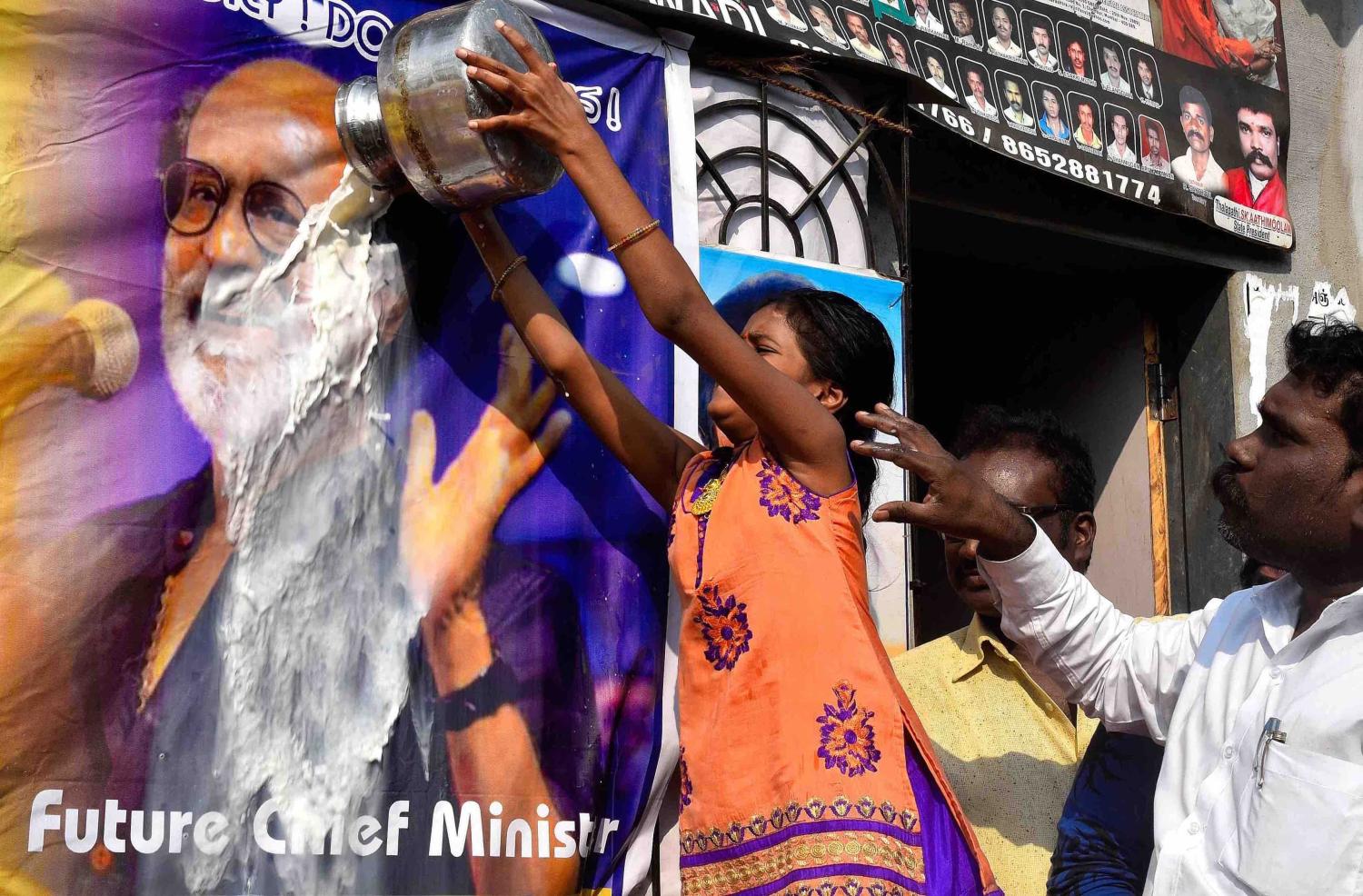Two famous Tamil actors are aiming to use their fan clubs as the basis for new political parties.
“First, we must integrate the registered and unregistered fans associations and bring them under one umbrella,” declared Tamil film star Rajinikanth at the launch of his new political party in December.
“We must then prepare to face the election.”
Rajinikanth, real-name Shivaji Rao Gaekwad, intends to run candidates for his yet-to-be-named party in the populous and economically important southern Indian state of Tamil Nadu.
But he is not alone. In February, another star of the silver screen, the talented Kamal Haasan, established a political party namedMakkal Needhi Maiamin Tamil Nadu.
While it is unusual for Bollywood actors from northern India to dabble in politics, several southern actors have also taken the political plunge. Apart from Tamil Nadu, two actors of Tollywood cinema – the Telugu-language film industry based in the state of Andhra Pradesh – have started their own parties in recent years (Chiranjeevi’s Praja Rajyam Party, and Pawan Kalyan’s Jana Sena).
Yet the greatest, and so far unrivalled, political career ever attained by an Indian film actor was that of Tamil cinema star Marudur Gopalan Ramachandran, commonly known as MGR. His journey from screen hero to the state’s chief minister is detailed in the book Ethnicity and Populist Mobilisation: Political Parties, Citizens and Democracy in South India (1999) by Narendra Subramanian.
From 1953 to 1972, MGR was a member of the Dravida Munnetra Kazhagam (DMK) party, but fell out with its leadership over his rising popularity. MGR’s cinematic fame spawned thousands of fan clubs, and he began to overshadow the leader of the DMK. MGR eventually co-opted these fan clubs as an informal part of his own party, Anna Dravida Munnetra Kazhagam (ADMK). Some fans were so loyal that they not only supported MGR’s political ambitions, but also made donations when the actor had problems paying taxes.
While Rajinikanth’s and Kamal Haasan’s fan clubs may not prove to be as potent politically, they will possibly serve similar purposes. The president of the Rajini Fan Club, Nagarajan M., has already declared that an effort to “convert” the fans into party members will occur. New political parties also present fan club members with opportunities for new careers.
In cinema-crazy India, actors can easily be more popular than most politicians. Movies have a much wider reach than many print publications and can communicate to the country’s illiterate and semi-literate population. For some diehard fans, the actors and the heroes they portray are one and the same. This is why some Indian actors shy away from playing villains, just as MGR did in his time.
In the case of MGR, it was not only difficult to differentiate between the politician and the actor, but also between his actions on- and off-screen. When campaigning, he liberally used popular quotes from his movies. When acting, he made sure he was portrayed as a champion of the masses, and some of his films featured political symbols, such as the flag of the party.
Rajinikanth and Kamal Haasan can now do the same, drawing on their popular identities created by past films and charity work, and accepting new movie roles that portray them as just, honest, well-governing, and popular leaders.
In terms of both their respective cinematic careers and the political situation in Tamil Nadu, the two stars seem to be entering politics at an opportune moment. As actors, they are already accomplished veterans, and because the Tamil Nadu state government is in the middle of its tenure, there is time for them to prepare for the next elections.
Tamil Nadu has had more recent experience of an actor turning to politics. Jayaram Jayalalithaa was a powerful chief minister who served six terms before she died in 2016. Jayalalithaa was MGR’s partner, both on screen and in real life, and her death caused a split in the ruling party, AIADMK. The demise of this popular leader (Jayalalithaa was often portrayed as mother to the poor masses) has also created a void which the new politicians may try to fill.
But politics doesn’t always simply follow the script. While Rajinikanth is more popular than Kamal Haasan, both are less popular than MGR used to be. Moreover, MGR’s cinematic and political careers went side by side almost from the beginning, and he enjoyed initial support from one of the two most popular parties in the state.
The two contemporary stars, in turn, will have to build their parties from scratch. Their fan bases will only get them started in the competitive landscape of Tamil politics. Wider alliances may beckon.
Yet the relationship between their silver-screen images and their political positions will certainly be a development worth watching.

